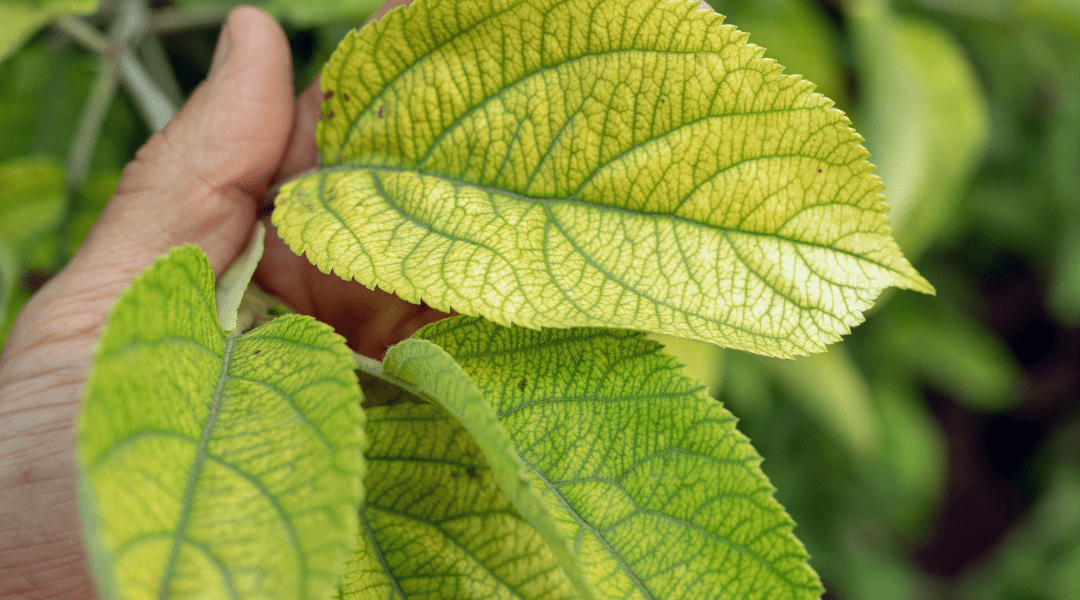Do you notice yellow leaves on your trees or shrubs? It’s not fall yet! They may be turning from a lack of water, disease, insects, or a nutrient deficiency—or it might be a case of “iron chlorosis.” It sounds quite technical, but really, it just means your plant is lacking iron. Fortunately, there are ways to solve it!
How Do You Check for Iron Chlorosis?
Yellowing leaves can be a sign of many different conditions. If it’s iron chlorosis, it usually shows up on new growth first. A second clue is if the veins on the yellow leaves remain green. In bad cases of iron chlorosis, yellow leaves may turn white and drop, twigs and branches may be stunted and die, and the plant may fail to flower or fruit.
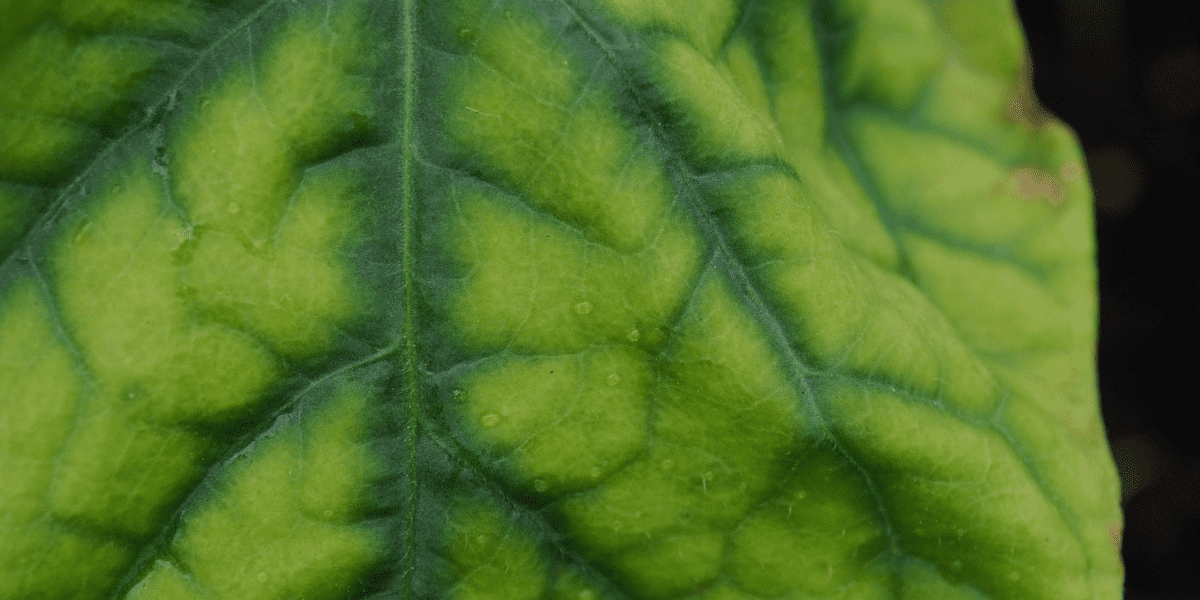
Which Plants Are Susceptible to Iron Chlorosis?
Any plant can get it, but the following are more susceptible than others.
- Trees: white pine, white oak, pin oak, tulip tree, magnolia, sweet gum, bald cypress, dogwood, birch, cherry, and apple.
- Shrubs: rhododendron, azalea, lilac, hydrangea bushes, blackberry, blueberry, grape, boxwood, arborvitae, and holly.
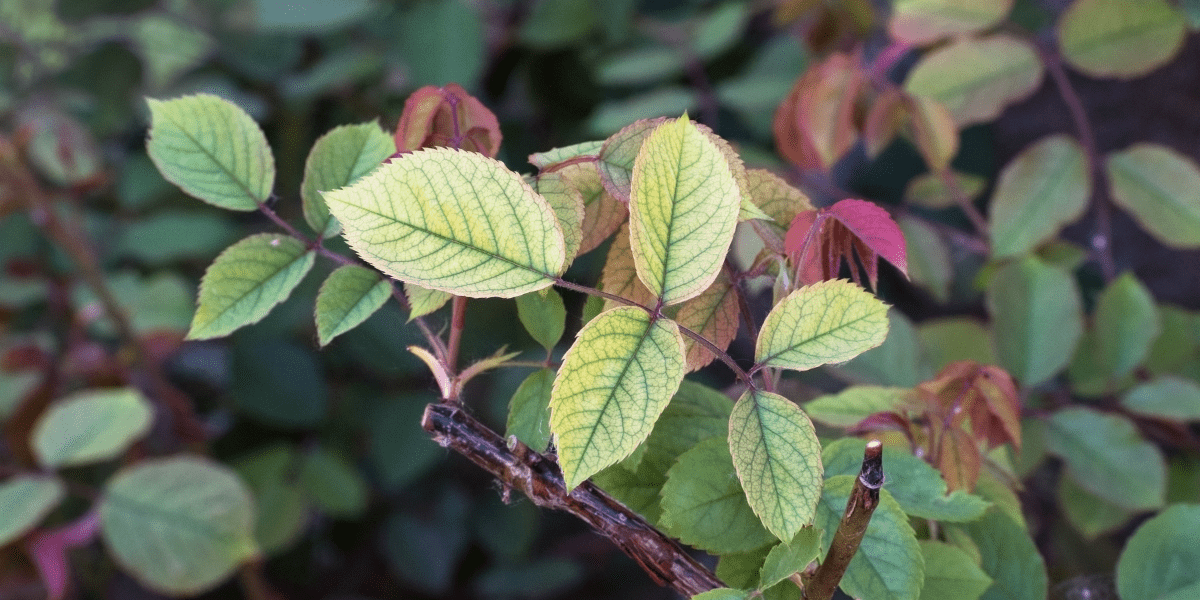
What Causes Iron Chlorosis?
Iron chlorosis happens when plants can’t bring enough iron to their leaves and fail to produce the green pigment in chlorophyll. The source of the problem is in the soil. A simple iron deficiency in the dirt itself may be the cause, or it could be from soils that are too alkaline. Alkaline soil (where the pH > 7) can prevent plants from absorbing iron, even if the soil itself has enough iron in it. So how do you find out what’s happening? A soil test is the best way to diagnose the problem.
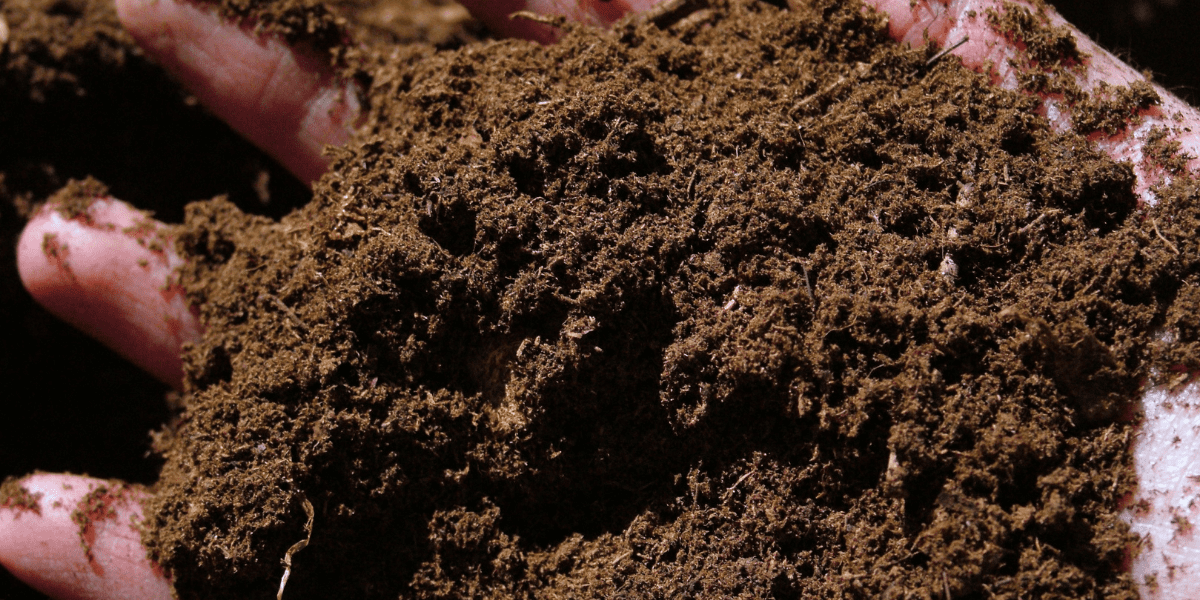
How Do You Treat Iron Chlorosis?
- Improve the soil: before you make major changes to the soil ingredients, first ensure that your plants have good soil to grow in. Add 2-4 inches of organic compost around the discolored shrub or tree. Mulch with a few inches of bark mulch on top. Good soil is essential for long term recovery from iron chlorosis.
- Change the Soil pH: if your soil is too alkaline, you can make the soil more acidic by adding an amendment. Sulfurs, or sulfates, are common and lasting amendments to make the soil more acidic. The adjustment will make more iron available to your plants. Talk to the experts at your local garden center to determine the best choice for your garden!
- Add Micronutrients to the Soil: if the soil test reveals a deficiency of iron, or of another mineral like manganese, which can also trigger chlorosis, then add amendments to correct the problem. Again, if necessary, our staff can help you find the right remedy for your soil.
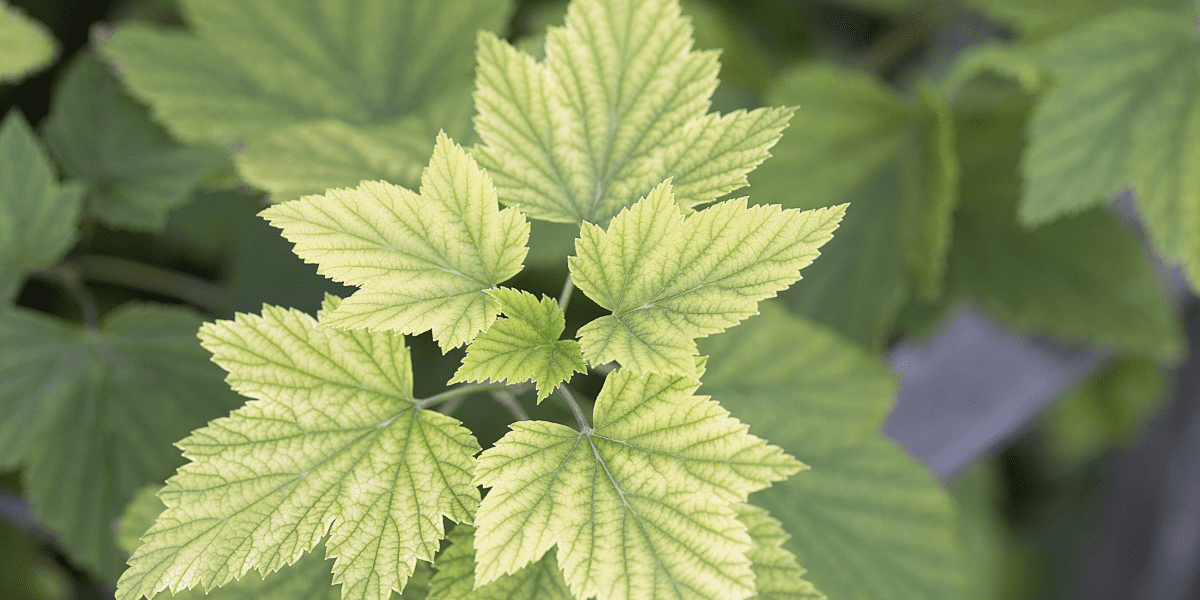
- Spray Leaves with an Iron Compound: spraying the leaves with an iron compound will correct the chlorosis temporarily, but amending the soil is necessary for lasting results.
Iron chlorosis is a problem that stems from the soil. Although it requires a soil test and specific amendments to correct, it’s completely solvable. But don’t expect immediate results. It takes 12 months for the amendments to mix into the soil and begin to relieve the chlorosis. At that point, you’ll start to notice greenery returning to your trees and shrubs.
For any further advice or lingering questions on iron chlorosis, drop by one of our garden centers conveniently located in Bloomingdale or Carpentersville!
Platt Hill Nursery is Chicago’s premier garden center and nursery in the Chicagoland area.

